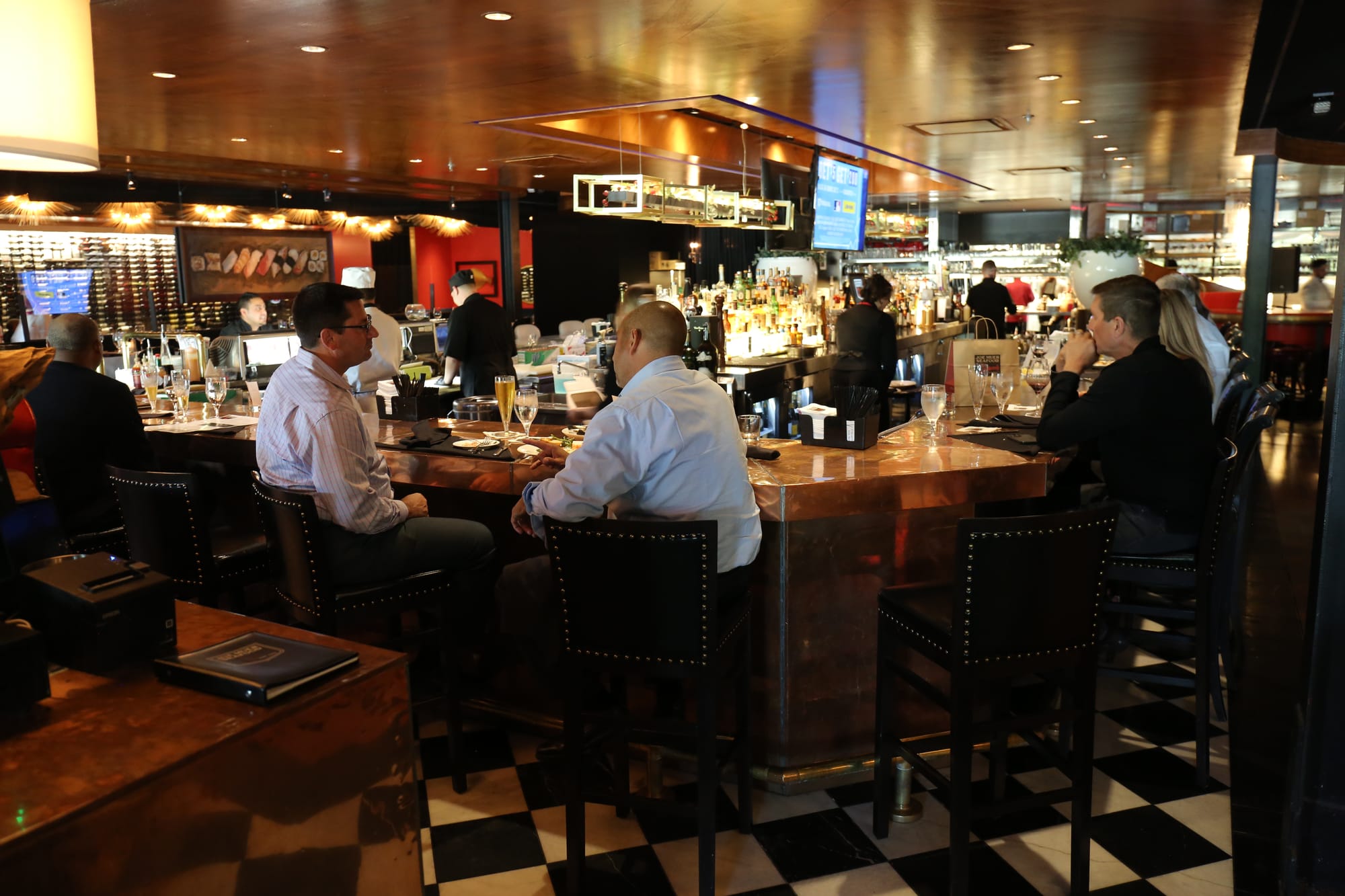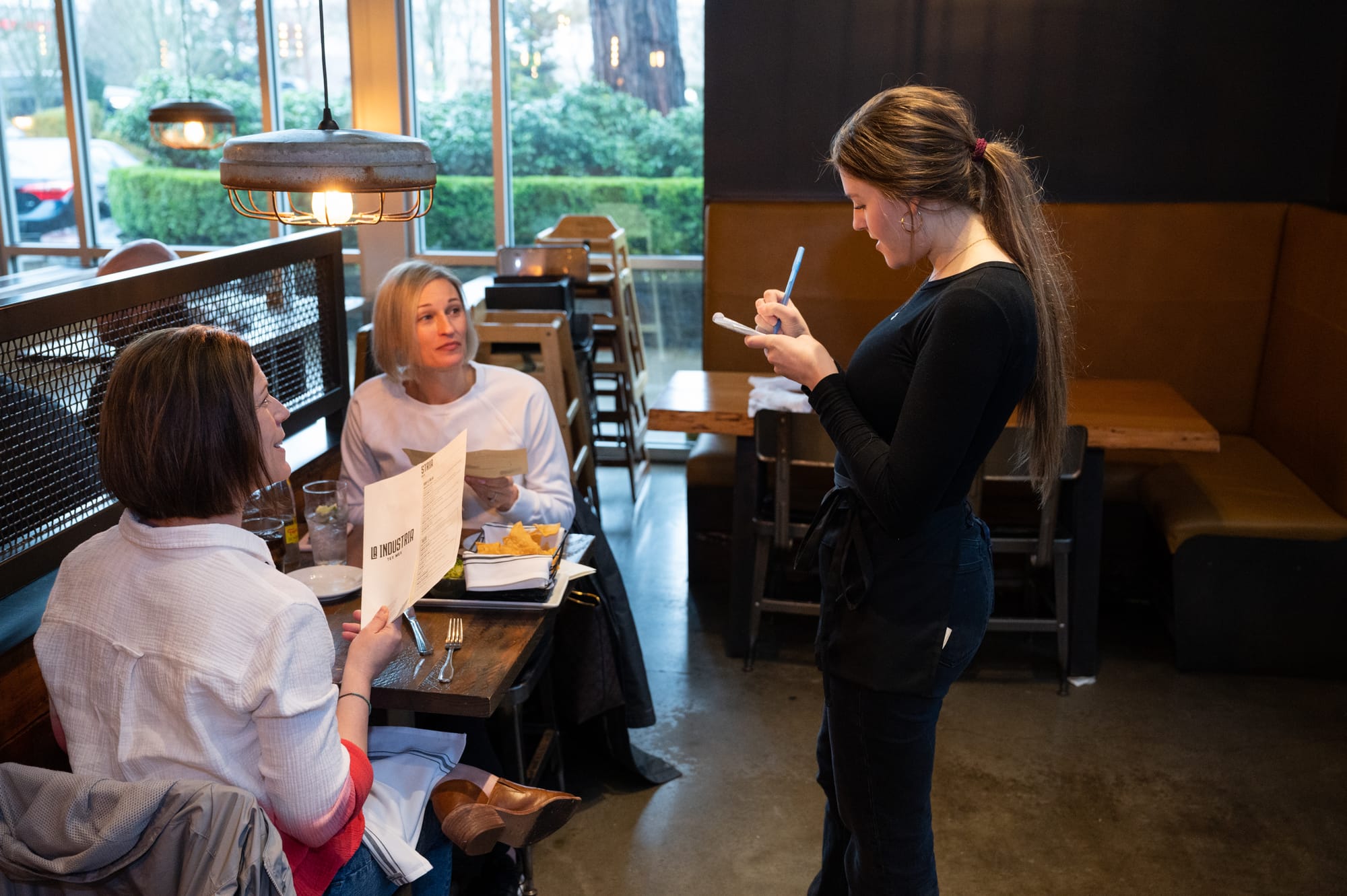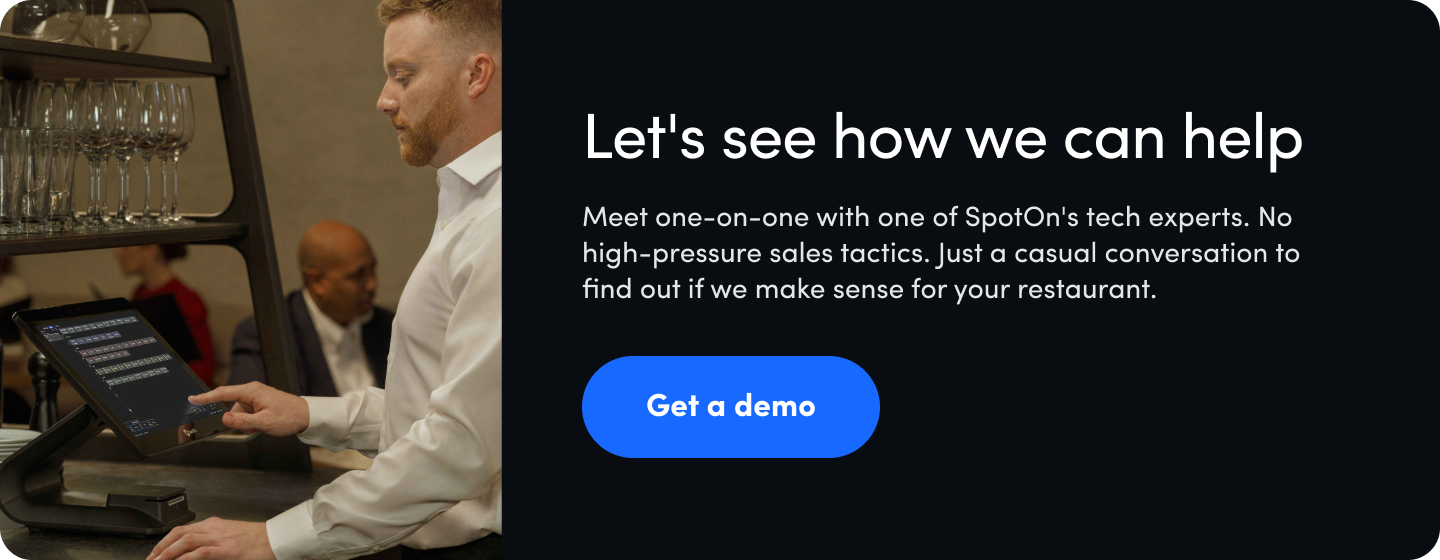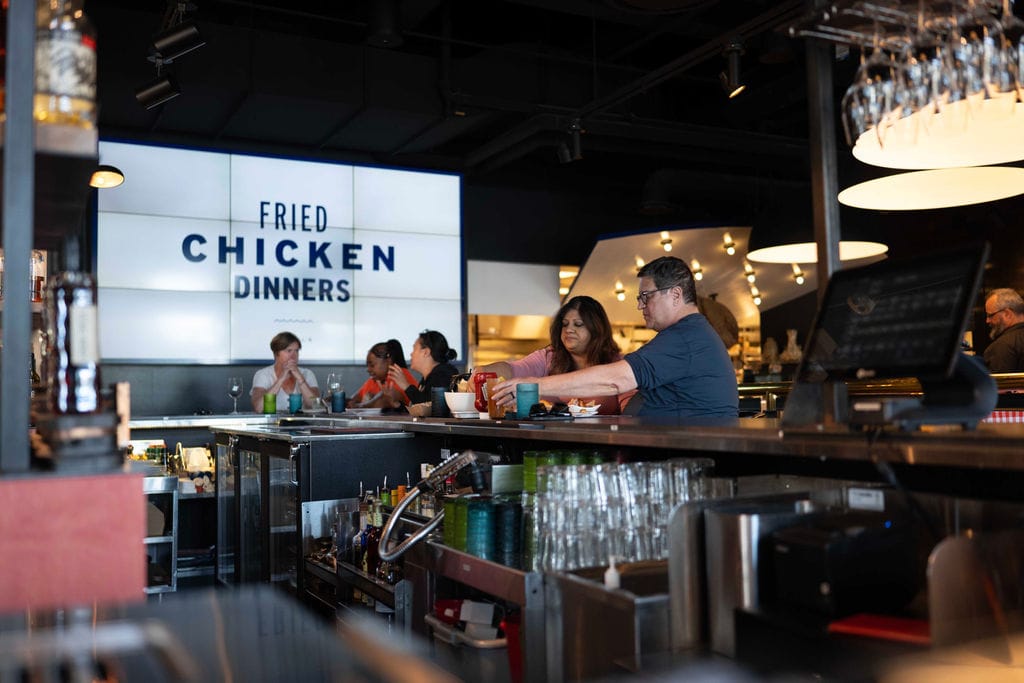Behind every successful restaurant, there's a clear vision. Popular, profitable restaurants might have different menus, ideal guests, and management philosophies, but they all know what they're trying to be.
The restaurant industry is a big tent. There's room for fast food chains, fine dining restaurants, and casual dining restaurants, steakhouses, falafel spots, taco trucks. Different types of restaurants have different needs when it comes to labor, tech, and other overhead costs. They're also associated with different profit margins and target audiences.
If you're opening a restaurant or are new to the industry, understanding different types of restaurants is crucial to finding a niche and sticking to it. Here's a list of popular restaurant types and how to deliver on guest expectations.
1. Fine dining restaurants
White tablecloths, candlelit dinners, extensive wine lists, and exceptional service are some of the hallmarks of fine dining establishments. Many fine dining spots have an upscale atmosphere, but a formal dress code and the finest tableware are no longer a prerequisite.
Fine dining establishments have historically had smaller profit margins due to the high cost of goods, labor, and overhead expenses. However, they can also charge higher prices and attract a less price-sensitive clientele. This is particularly true for certain types of restaurants, including those serving French and Japanese cuisine.

Guests expect full table service from a fine dining restaurant, from a server who walks them through the menu and provides wine recommendations to fresh table settings between courses. For the high price of the experience, guests expect fine dining establishments to anticipate their needs and provide not just top-notch food with the finest ingredients but a memorable full service experience, too.
Compared to other types of restaurants, tech plays a behind-the-scenes role in fine dining restaurants. The most important piece of technology is the fine dining POS, which gives operators accurate sales data to help make key business decisions.
2. Contemporary casual restaurants
Contemporary casual restaurants are a newer restaurant concept. They're not fine dining, offering a more relaxed atmosphere compared to the upscale atmosphere associated with a fine dining restaurant. This means more comfortable seating and communal tables, a casual dress code, and a menu that includes more shared plates and familiar dishes (sometimes with a twist).
This type of restaurant might offer more accessible prices compared to fine dining restaurants, but not necessarily. Amid the casual atmosphere, there's usually a preference for high-quality food, fresh ingredients, and craft alcoholic beverages.
3. Fast food and quick service restaurants
Fast food is so back. 83% of American families eat at fast food restaurants at least once a week, and fast food sales peaked at $490 billion in 2023. Many fast food establishments are chain restaurants, like Dominos, Taco Bell, and Burger King. But there are also plenty of independently operated fast food restaurants, serving everything from pizza to tacos to burgers for low prices and with quick service.
Since fast food restaurants don't require table service, they can afford lower labor costs. However, many popular fast food restaurants, citing a labor shortage, have tried to lure workers with higher wages and more tip opportunities. Fast food menus are known for their efficiency, with many menu items sharing a simple ingredient list.
A quick-service restaurant and a fast-food restaurant are essentially the same thing. The term “fast-food” is more common with consumers, while people in the restaurant industry are more likely to say “quick-service.”
Compared to a full-service restaurant, a quick-service restaurant (QSR) offers limited table service and a more limited dining room. Few quick-service restaurants offer alcoholic beverages, and you're more likely to see less formal or disposable tableware.
Quick-service spots offer counter service, meaning guests order at the counter with a server and pick up their order at a window or pick-up station. Guests serve themselves to beverages, napkins, and sauces. QR codes and kiosks are popular at these types of restaurants.
Quick service contrasts with fast casual restaurants, which usually refers to healthier fast food. At a quick-service restaurant, you’re more likely to find meal combos, lower price points, drive-thrus, and food cooked from frozen (though not always).
4. Ghost restaurants
Ghost restaurants, or ghost kitchens, offer only delivery service. They're commonly found on third-party delivery platforms. Sometimes called virtual restaurants, they lack physical locations and instead operate out of commissary kitchens. Ghost kitchens gained recognition during the COVID-19 pandemic, though they have lost popularity since then.
They're more tech-savvy than a typical fast food restaurant, relying on online ordering rather than walk-ins. You're likely to find a kitchen display system in the back of a ghost restaurant to maximize efficiency and make a rush of orders easier on the staff.
For a new chef or aspiring restaurant owner, opening a ghost restaurant provides an opportunity to test their menu and get their feet wet in the restaurant industry. A virtual restaurant likely has a guest audience that skews younger, more online, and more focused on quick service and affordable prices than a thoughtful dining experience.
5. Food trucks
Food trucks have many benefits. They're nimble, they don't pay rent, and they can go where potential guests are instead of waiting for them to walk through the door. But running a food truck isn't for the faint of heart.
Food trucks are often focused on a specific type of cuisine or delicacy and offer limited menus. The physical limitations of running a kitchen in a confined space make the cooking process different from traditional restaurants. They're common in urban and metropolitan areas and do brisk business for the office lunch crowd.
Many aspiring restaurant owners start their businesses with a food truck to test how guests respond to their menus. This can help them identify popular items that can serve as the cornerstone of their brick-and-mortar menu. From indulgent fried foods, like fried chicken, to healthy fresh food, like poke bowls, there are no limits to what food trucks can serve (as long as the food can be prepared in a tiny mobile kitchen and served to guests on the go).
6. Casual dining restaurants
Casual dining restaurants make up a big chunk of the restaurant landscape. They typically offer full service at affordable prices and commonly offer deals through happy hours and lunch specials. You probably don't need a reservation to visit nearby casual dining establishments. These restaurants are family-friendly. In fact, many casual dining spots are family-style restaurants that offer generous portions, kids' menus, and shared dishes.
While all casual dining spots share a casual atmosphere, some might specialize in higher-quality food and alcoholic beverages that require more labor to prepare. From the neighborhood greasy spoon to the casual dining spot serving local market produce, casual dining restaurants often have a loyal local guest following and friendly staff.
Casual restaurants can be low-tech, with just a casual dining POS system, or incorporate more technology by equipping servers with handheld pos systems and QR codes for ordering at the table.

7. Fast casual restaurants
Fast casual restaurants defy traditional restaurant categories. They're most similar to QSRs, but they might offer limited table service and larger menus. Fast casual spots are mostly counter service, though staff will sometimes bring orders to guests with the associated table number. They’re unlikely to have drive-thru or KDS screens, but they might offer online pickup for pick-up on a website or app where guests can customize their orders.
The menus are often build-your-own style and welcome customizations, and the food is usually fresher rather than sourced frozen. This can lead to a higher price point. Compared to fast food places and QSRs, fast casual restaurants usually offer a more comfortable and aesthetically pleasing dining room or outdoor seating.
While many fast-casual places do most of their restaurant business during the lunch or post-work dinner rush, some fall into the destination restaurant category. The social media popularity of places like CAVA is an example of how these informal eateries can gain a loyal following.
A fast casual restaurant can capitalize on guest loyalty with a customer loyalty program that works in sync with a fast casual pos system. As this category continues to grow in popularity, distinguishing your concept and bringing customers back is more important than ever.
8. Pop-up restaurants
Pop-up restaurants are temporary dining experiences that operate for set amounts of time. They often share space with a casual dining establishment and use their kitchen during off-hours. These events can be ticketed for a set menu or include a special limited menu that isn't typically offered in the host restaurant.
These concepts gained popularity during the pandemic. However, they can also be great tools for chefs experimenting with their menus and hoping to expand their guest reach. Pop-up restaurants and limited-time offers have a similar effect—they create urgency and excitement about the dining experience. Not every pop-up restaurant is an exclusive dinner at a chic location. Sometimes, it's just about exceptional food and great service.
9. Cafes and coffee shops
Cafes, coffee shops, bakeries, and tea houses are all similar types of restaurants with limited hours and menus. These restaurant concepts mostly sell drinks, which can be high-margin. Within this category, there's a lot of variety. Some places specialize in a certain kind of baked good, like croissants or pies, while other places offer prepared hot and cold foods and lunch fare.
Few cafes and coffee shops are full-service restaurants. Most either prioritize fast, efficient counter service with a cafe POS system for coffee on the go or position the coffee house as more than a food service business but a cozy place with hot drinks for the community to gather.
10. Buffet-style restaurants
Buffet restaurants bridge multiple categories: is it a casual dining restaurant? Does the affordability put buffets in the family-style restaurant category? If you categorize restaurants by the food served, many buffets are ethnic restaurants. Buffets offer an all-you-can-eat dining experience for a flat rate. At a buffet, you might find limited table service or more cafeteria-style counter service.
Popular buffet concepts include salad and hot bars for the quick lunch crowd, Indian buffets, Chinese food buffets, and Brazilian steakhouses. Rather than focus on table service, these types of restaurants are all about serving quality food and giving guests plenty of bang for their buck.
11. Pubs and breweries
While you might associate pubs and breweries more with pint glasses than plates, many offer food service alongside bar service. A gastropub is a full-service pub that serves food that is of a quality similar to that of a restaurant. Some breweries may host a food truck or pop-up restaurant to feed their guests, but many have full kitchens and are well-known for their food offerings.
As in most restaurant categories, pubs and breweries make their profits through beverage sales. That doesn't mean the food isn't important. Even offering a few well-executed family-style dishes, ordered through counter service, can keep guests around enjoying the ambiance and drinks. Even if you're not full service, a pub or brewery POS is essential for a smooth ordering process, whether that's through a server, QR code, or person behind the bar.
12. Walk-up windows
Walk-up windows are as far away from full service as a restaurant can get. They're hole-in-the-wall types of restaurants that specialize in grab-and-go food items, like ice cream, pizza, sandwiches, and tacos. Sometimes, they're located near outdoor seating, but they're focused on the quick transaction rather than a slow dining experience.
These restaurants are also more likely to have limited menus with rotating specials. Implementing marketing software is key to generating excitement and bringing guests back to try the ice cream sundae of the month or this week's burger collab.
13. Bars and nightclubs
Many bars and nightclubs offer full service throughout their open hours or offer food service during a certain window. This is a great way to keep guests on-premise so they can continue enjoying the drink menu, which is more likely to move the profit needle.
From the humble dive bar to the multilevel nightclub, many establishments fall under this category. While they all need a bar POS system for ordering and payment processing, some bars are more likely to rely on QR codes or counter service with the bartender ordering as opposed to servers. Pre-authorization is a must-have POS system feature for bars and nightclubs to avoid walkouts and ensure quicker service.
So many types of restaurants. A world of needs and priorities.
Whether your restaurant is focused on a specialty menu and seasonal ingredients, exceptional service, speedy ordering, incredible ambiance, or some combination of the above, it changes how you do business. Different types of restaurants require different staff training, ordering processes, evaluation, and marketing strategies.
Instead of throwing spaghetti at the wall, take stock of your restaurant's needs and make a plan to execute them.












